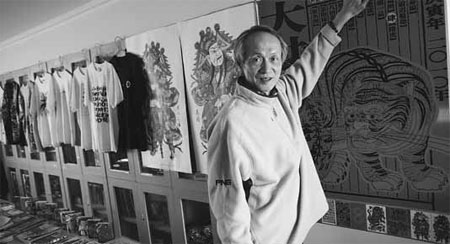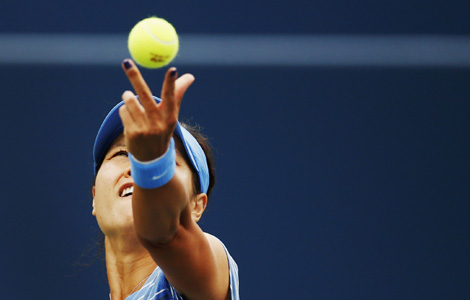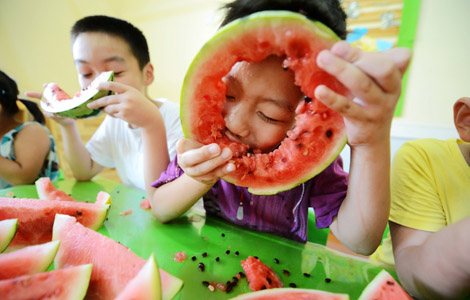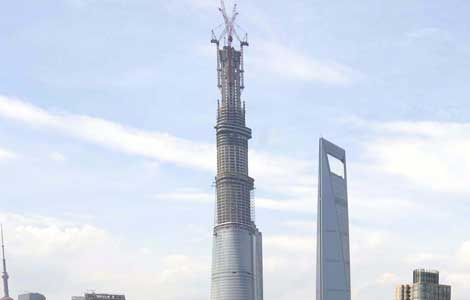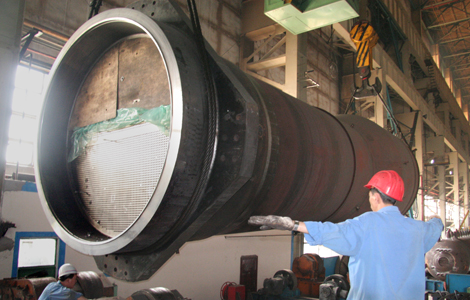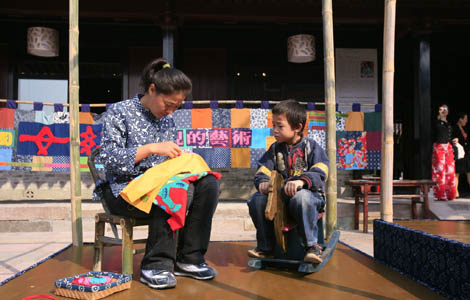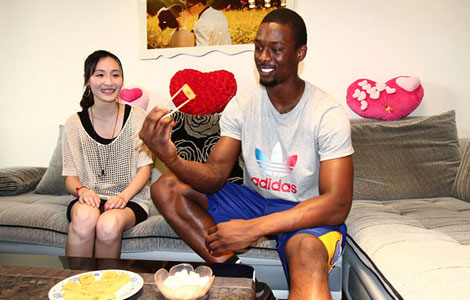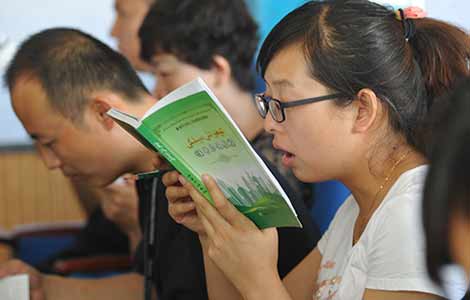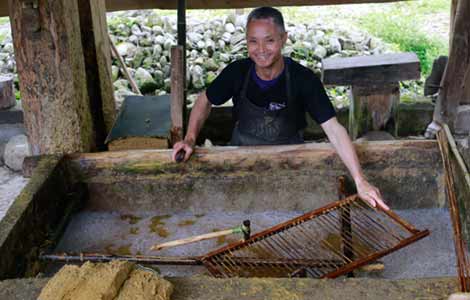Walk the talk
Updated: 2013-08-08 06:38
By Sun Yuanqing (China Daily)
|
||||||||
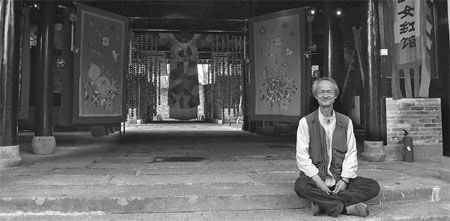
|
Huang Yung-sung curates several handicraft art exhibitions which are held at Cicheng's ancient compounds (top). Provided to China Daily He shows handicraft-related productions at Echo's Beijing office (above). Guan Xin / China Daily |

His publication on Chinese folk culture and arts won Time magazine's "Best of Asia" award. He is also the person who categorized and named the Chinese knot, among others. Sun Yuanqing speaks to Huang Yung-sung in Ningbo, Zhejiang province about his motivation to preserve Chinese folk arts and crafts.
Huang Yung-sung is a walking testimony of how easy it is to embrace ancient wisdom.
An advocate of Chinese folk handicrafts and arts, Huang not only talks about it, he wears it and walks in it. His handmade cattail fan is always at hand.
He is often asked about the peculiarity of the plate-like shape of the fan, which he is more than delighted to explain in great detail. He will talk about the sophistication of Chinese fan-weaving and often, without even realizing it, he will have converted another ardent enthusiast.
Having traveled all over China to research, record and publish about endangered Chinese traditional handcrafts for more than 40 years, Huang has found a second home: Cicheng county in Ningbo city in East China, a place he believes to be the future headquarter of Chinese traditional handicrafts and arts.
"I have been searching for a long time. This is the place where I can truly live my belief," says 69-year-old Huang. "What we are trying to build here is a place where craftsmen, designers and manufacturers can work together, get inspired and brainstorm, to revive these crafts and benefit more people."
Huang comes to Cicheng on a monthly basis to curate art exhibitions, plan training programs and share ideas with local developers.
The six Mother's Art exhibitions are now in the fourth year. He is now busy preparing the Fathers and Brothers' Art exhibitions, scheduled for October.
"We've all become Hakkas of Cicheng," he says to his co-workers as they discuss the coming exhibition.
Huang was born in Taiwan. He is the eighth generation of Hakka (which means guest) origin, known for its tradition of migration. A well-known avant-garde photographer and director in his late 20s, Huang co-founded the magazine Echo in 1971 to promote Chinese folk culture and arts.
Combining substantial field research and innovative layout design, the magazine is considered an artwork in itself. It was selected as "Best of Asia" by Time magazine in 2006.
Huang has hundreds of books on Chinese folk culture and art under his name. He is also the person who categorized and named the Chinese knot.
Huang first came to the Chinese mainland in 1988, as soon as the Taiwan authorities allowed visits to the mainland. Having heard all the stories immigrants from the mainland had told him over the years, Huang was eager to experience the place himself.
"Everywhere I went, it felt as if I'd visited the place before because I have memorized the details since I was a child."
Huang traveled extensively all over West China, researching and recording as many Chinese folk crafts and arts as he could.
Five years ago, clothing manufacturers in Ningbo approached Huang after reading his book on Chinese needlework.
"They were attracted by the beautiful work. But they didn't know how to weave it into modern design," Huang says.
While helping the manufacturers in Ningbo, Huang got to know about the small town of Cicheng and was invited to design and oversee the handcrafts revitalization programs in the city.
"We have been manufacturing for the West for so long, at the expense of neglecting our own culture. There is no way to get out of it except to start preserving our native culture and weave it into the modern industry."
Huang recalls that in the early 1980s, when he was collaborating with Bertelsmann to publish the German version of his book Chinese Knot, his German counterpart noticed that Lycra cameras and Benz cars were very popular in China.
"He told me something I'll never forget, 'Germany has a good manufacturing industry because we attach great importance to handicrafts. Chinese knot is extraordinary and I believe there are many more'.
"He said that for a country, there will be no heavy industry without a light industry, and there will be no light industry if there is no traditional handicrafts," Huang says. "I was shockingly enlightened but also very sad."
As China sees rapid rural modernization in the past few decades, traditional handicrafts are being neglected at a pace faster than ever before, Huang says.
But, he says there is no need to be pessimistic.
"Think about the pattern of tai chi. It consists of two alternating forces, the yin and the yang. When the yin sinks, the yang climbs up, and together they are forever rolling forward. So when one force is sinking, don't panic, because it is also a sign of advancement of the whole mankind. The only thing we have to do is to preserve the good as much as possible."
Contact the writer at sunyuanqing@chinadaily.com.cn.
(China Daily USA 08/08/2013 page10)
Most Viewed
Editor's Picks
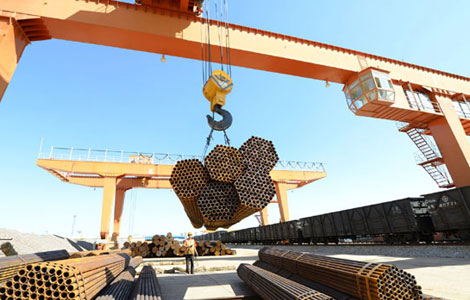
|

|

|

|

|

|
Today's Top News
China's innovation prowess looms large
US, EU concerned about stalemate in Egypt
EU to continue anti-subsidy solar probe
Nation poised to import more GMO products
Illegal Shanghai stay costs foreigner 10,000 yuan
China to be leading business travel market
Cards make paying global tuition easier
Probes not targeting foreign brands
US Weekly

|

|
